Enhancing intraneural revascularization following peripheral nerve injury through hypoxic Schwann-cell-derived exosomes: an insight into endothelial glycolysis
- PMID: 38789980
- PMCID: PMC11127458
- DOI: 10.1186/s12951-024-02536-y
Enhancing intraneural revascularization following peripheral nerve injury through hypoxic Schwann-cell-derived exosomes: an insight into endothelial glycolysis
Abstract
Background: Endothelial cell (EC)-driven intraneural revascularization (INRV) and Schwann cells-derived exosomes (SCs-Exos) both play crucial roles in peripheral nerve injury (PNI). However, the interplay between them remains unclear. We aimed to elucidate the effects and underlying mechanisms of SCs-Exos on INRV following PNI.
Results: We found that GW4869 inhibited INRV, as well as that normoxic SCs-Exos (N-SCs-Exos) exhibited significant pro-INRV effects in vivo and in vitro that were potentiated by hypoxic SCs-Exos (H-SCs-Exos). Upregulation of glycolysis emerged as a pivotal factor for INRV after PNI, as evidenced by the observation that 3PO administration, a glycolytic inhibitor, inhibited the INRV process in vivo and in vitro. H-SCs-Exos more significantly enhanced extracellular acidification rate/oxygen consumption rate ratio, lactate production, and glycolytic gene expression while simultaneously suppressing acetyl-CoA production and pyruvate dehydrogenase E1 subunit alpha (PDH-E1α) expression than N-SCs-Exos both in vivo and in vitro. Furthermore, we determined that H-SCs-Exos were more enriched with miR-21-5p than N-SCs-Exos. Knockdown of miR-21-5p significantly attenuated the pro-glycolysis and pro-INRV effects of H-SCs-Exos. Mechanistically, miR-21-5p orchestrated EC metabolism in favor of glycolysis by targeting von Hippel-Lindau/hypoxia-inducible factor-1α and PDH-E1α, thereby enhancing hypoxia-inducible factor-1α-mediated glycolysis and inhibiting PDH-E1α-mediated oxidative phosphorylation.
Conclusion: This study unveiled a novel intrinsic mechanism of pro-INRV after PNI, providing a promising therapeutic target for post-injury peripheral nerve regeneration and repair.
Keywords: Exosome; Glycolysis; Intraneural revascularization; Peripheral nerve injury; Schwann cell; Sciatic nerve; miR-21-5p.
© 2024. The Author(s).
Conflict of interest statement
The authors declare no competing interests.
Figures
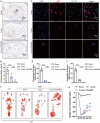
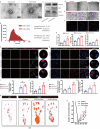
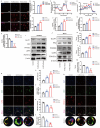


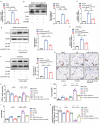
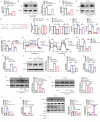

Similar articles
-
Study on the Role and Mechanism of Exosomes Derived from Dental Pulp Stem Cells in Promoting Regeneration of Myelin Sheath in Rats with Sciatic Nerve Injury.Mol Neurobiol. 2024 Sep;61(9):6175-6188. doi: 10.1007/s12035-024-03960-9. Epub 2024 Jan 29. Mol Neurobiol. 2024. PMID: 38285287
-
Down-regulation miR-146a-5p in Schwann cell-derived exosomes induced macrophage M1 polarization by impairing the inhibition on TRAF6/NF-κB pathway after peripheral nerve injury.Exp Neurol. 2023 Apr;362:114295. doi: 10.1016/j.expneurol.2022.114295. Epub 2022 Dec 6. Exp Neurol. 2023. PMID: 36493861
-
Exosomes produced by adipose-derived stem cells inhibit schwann cells autophagy and promote the regeneration of the myelin sheath.Int J Biochem Cell Biol. 2021 Mar;132:105921. doi: 10.1016/j.biocel.2021.105921. Epub 2021 Jan 6. Int J Biochem Cell Biol. 2021. PMID: 33421632
-
Therapeutic effect of exosomes derived from Schwann cells in the repair of peripheral nerve injury.Life Sci. 2024 Nov 15;357:123086. doi: 10.1016/j.lfs.2024.123086. Epub 2024 Sep 30. Life Sci. 2024. PMID: 39357794 Review.
-
The Role of Endothelial Cell Glycolysis in Schwann Cells and Peripheral Nerve Injury Repair: A Novel and Important Research Area.Neurochem Res. 2025 Mar 18;50(2):121. doi: 10.1007/s11064-025-04374-2. Neurochem Res. 2025. PMID: 40100469 Review.
Cited by
-
ATP5J regulates microglial activation via mitochondrial dysfunction, exacerbating neuroinflammation in intracerebral hemorrhage.Front Immunol. 2024 Dec 13;15:1509370. doi: 10.3389/fimmu.2024.1509370. eCollection 2024. Front Immunol. 2024. PMID: 39735538 Free PMC article.
-
The Application of Stem Cells and Exosomes in Promoting Nerve Conduits for Peripheral Nerve Repair.Biomater Res. 2025 Apr 14;29:0160. doi: 10.34133/bmr.0160. eCollection 2025. Biomater Res. 2025. PMID: 40231207 Free PMC article. Review.
-
Molecular and cellular mechanisms underlying peripheral nerve injury-induced cellular ecological shifts: Implications for neuroregeneration.IBRO Neurosci Rep. 2024 Dec 28;18:120-129. doi: 10.1016/j.ibneur.2024.12.013. eCollection 2025 Jun. IBRO Neurosci Rep. 2024. PMID: 39877591 Free PMC article. Review.
-
Extracellular vesicles derived from Schwann cells to enhance bone and dental tissue regeneration: a literature review.J Nanobiotechnology. 2025 Jul 11;23(1):502. doi: 10.1186/s12951-025-03585-7. J Nanobiotechnology. 2025. PMID: 40646600 Free PMC article. Review.
-
Strategies for promoting neurovascularization in bone regeneration.Mil Med Res. 2025 Mar 3;12(1):9. doi: 10.1186/s40779-025-00596-1. Mil Med Res. 2025. PMID: 40025573 Free PMC article. Review.
References
-
- Douglas W. Zochodne. Neurobiology of Peripheral nerve regeneration. Cambridge University Press; 2008.
MeSH terms
Substances
Grants and funding
- No.202201020578/Guangzhou Municipal Science and Technology Project
- No.2022A1515012433/Guangdong Basic and Applied Basic Research Foundation
- No.2023WW504/The "five-five" project construction project of the Third Hospital of Sun Yat-sen University
- No.2020001/Sun Yat-Sen University Clinical Research 5010 Program
LinkOut - more resources
Full Text Sources
Medical

